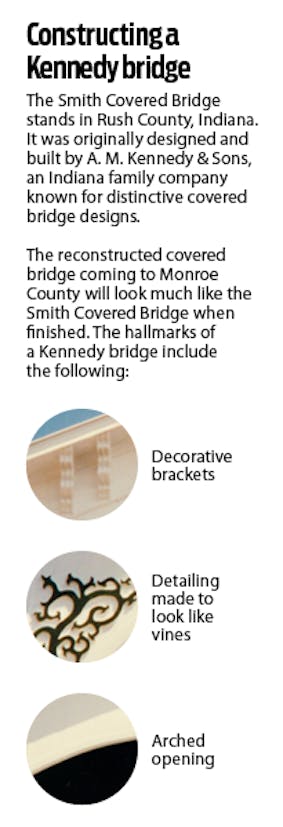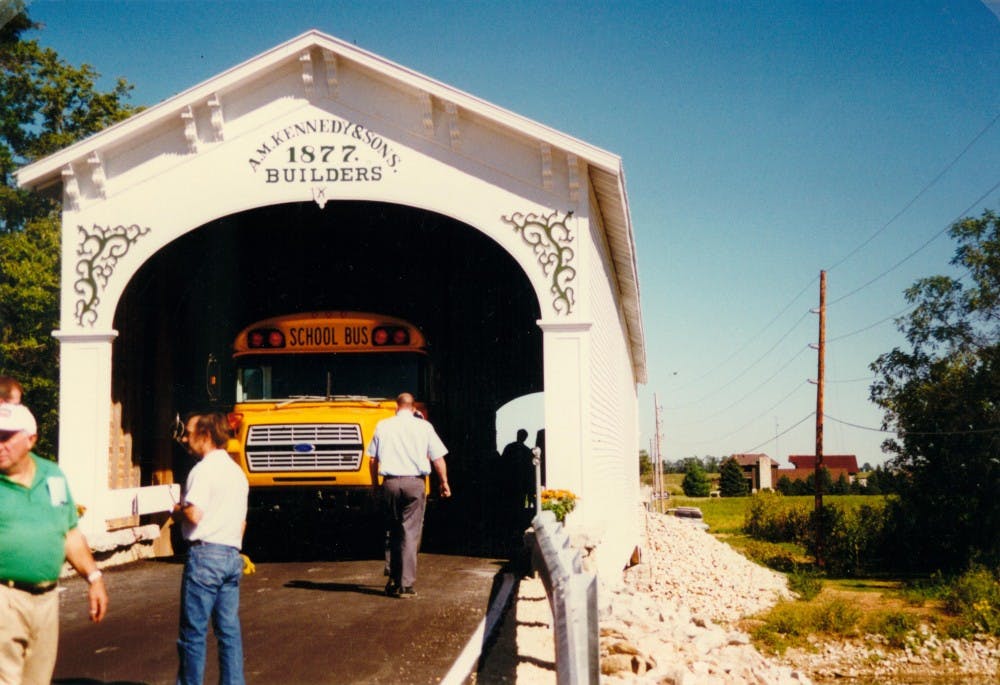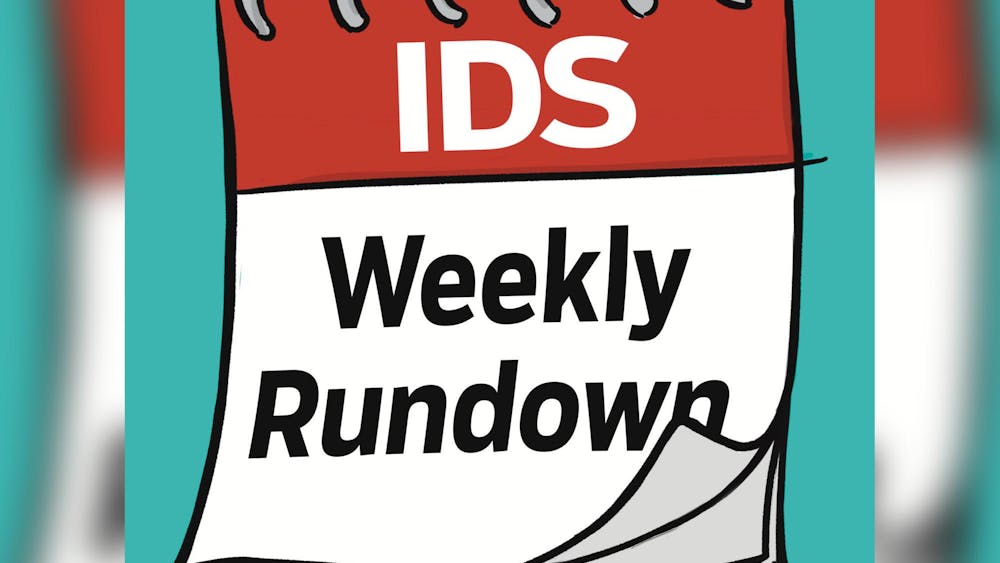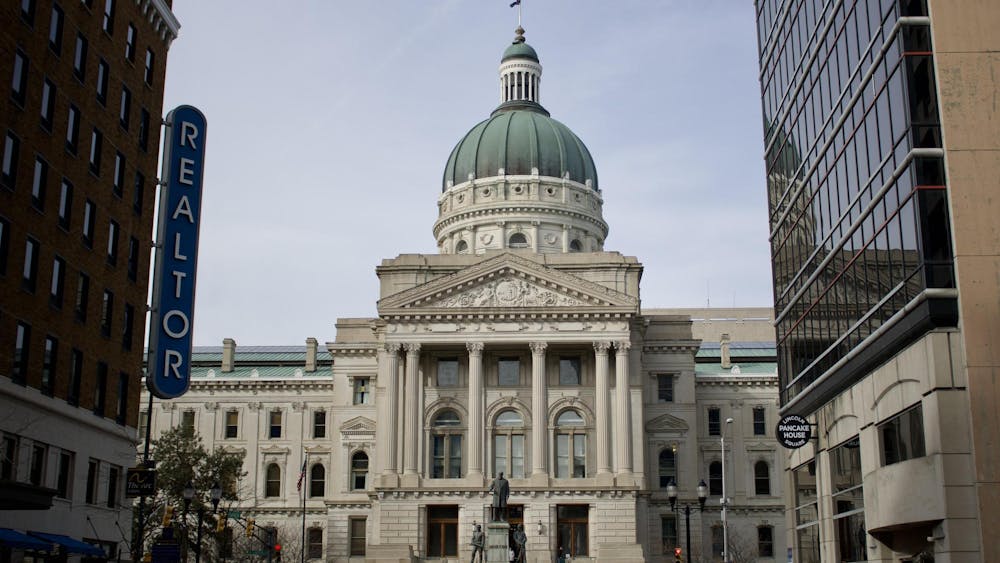When James Barker learned of a covered bridge from Shelby County, Indiana, for sale about 20 years ago, he did something a little unusual — he bought it.
Now, after years of planning and jumping through bureaucratic hoops, Barker is the lead engineer on a reconstruction project that will use portions of the Shelby County bridge to create the first covered bridge in Monroe County in more than 40 years.
“It’s been a long wait, and it could’ve gone quicker, but it’s going to be worth the wait,” Barker said.
Construction on the bridge, which will span Beanblossom Creek about six miles northwest of Bloomington, is scheduled to start this year. Barker said the bridge will sit about 120 feet from the site of Monroe County’s last covered bridge, the McMillan Bridge. It was built in 1879 but destroyed by a fire in 1976.
The reconstruction of the Shelby County bridge — named the Cedar Ford Bridge — is being funded by more than $800,000 in government grants, plus additional funds from the county.
Though the project was initiated in the early 2000s, Barker said environmental issues and grant requirements delayed construction until now.
When finished, the bridge will be made of about 10 percent wood from the old bridge and 90 percent new wood, Barker said. Poor storage destroyed most of the original timber, but the design for the reconstruction will mostly replicate what the bridge looked like when it was first built in 1885.
“It will appear to be entirely original even though very little will be original,” Barker said.

The Cedar Ford Bridge was built by A. M. Kennedy & Sons, an Indiana family company known for distinctive covered bridge designs featuring arched openings and detailing made to look like vines, among other markers.
Monroe County at one point contained several Kennedy bridges before they were removed for different reasons, and Barker said it’s fitting the Cedar Ford Bridge will continue this historic lineage. During the peak use of covered bridges, there were more than 50 Kennedy bridges across Indiana.
Today, Indiana has 91 historic covered bridges, including two in nearby Brown County, Indiana. This is the fourth greatest number of covered bridges of any state in the country, said Andy Rebman, president of the Indiana Covered Bridge Society.
Indiana also has the longest historic covered bridge in the country, the Medora Covered Bridge, when measured by the length of the bridge deck, Rebman said.
Originally for transportation, covered bridges now also serve other purposes.
They drive tourism as people traverse the state and the country visiting them. Rebman said in Parke County, Indiana, an annual covered bridge festival attracts 2 million people over 10 days.
Barker said tourism contributed to why Monroe County decided to invest in reconstructing the bridge. Monroe County already draws a number of visitors each year for different festivals or performances, and the bridge will be yet another attraction for visitors.
This benefits the county and Bloomington, Barker said, because more people visiting means more people also stopping at local restaurants and shops.
“For the county to have a covered bridge to visit is one more gem in the ring,” Barker said.
Covered bridges today also serve a historical purpose. Rebman said visiting a covered bridge allows people to touch and use something from the past in a way not possible with artifacts in a museum.
Though many covered bridges have been lost to time, Rebman said there has been a resurgence in valuing and protecting covered bridges — some of which date back about 150 years — in the last few decades.
“I think people are realizing that what is being currently built is throw-away,” Rebman said. “We’re losing a lot of our history along the way, so they’re trying to keep a link to the past.”
Barker said all historical bridges, including both wooden covered bridges and metal truss bridges, are meaningful. They represent a lot to Hoosiers, especially those who can trace their family lines back for decades.
“Covered bridges and old metal trusses do more than carry us across the stream,” Barker said. “They give us a sense of belonging, of being a continuation of your grandparents’ life here.”






